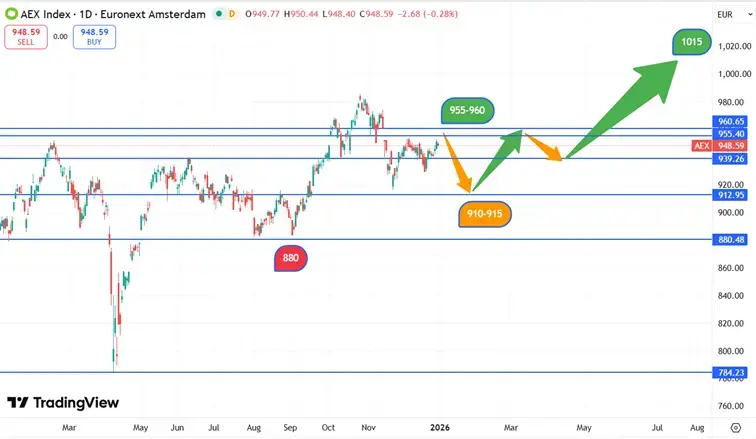Emerging Markets: golden times ahead?
Publication date: September 6, 2024
Emerging Markets is the international term for the Dutch "emerging market" or "emerging economies." We prefer the latter.
The term has been around since 1981 but only really became popular in 2001 when Goldman Saks coined the term BRICS. From that point on, global attention to emerging economies grew tremendously. The Internet crash was in full swing causing stock prices of mainstream funds to plummet hard and people started looking for alternatives. At the time, the economies of Brazil, Russia, India, China and South Africa (BRICS) had the positive spotlight of the influential U.S. investment bank Goldman Saks, causing investors to take full advantage of the expected growth of these economies. The years that followed were marked by high highs and deep lows of the respective economies.
In order to assess the current situation of emerging economies, we will first elaborate on the content and recent developments. Then we can make an assessment for the future on fundamental and technical aspects.
.webp)
What makes an economy an emerging economy?"
Emerging markets refer to economies that are in a process of rapid growth and industrialization and are continuing to develop, typically through economic reforms, improved infrastructure, and greater participation in world trade. These markets are characterized by their dynamic growth potential, demographic trends, and the gradual development of financial and regulatory systems aimed at supporting sustained economic expansion.
Main features of emerging economies:
Emerging economies experience higher economic growth rates than developed economies due to rapid industrialization, urbanization, and expansion of the middle-class population. These economies typically undergo significant reforms, including opening to foreign investment, deregulation of key industries, and privatization of state-owned enterprises.
emerging economies often have diverse economies with a mix of agriculture, manufacturing, and services, although some still rely heavily on specific sectors such as raw materials or manufacturing.
Emerging economies typically have younger, growing populations, which can lead to higher consumer spending and a growing labor force.
Although they offer high growth potential, emerging economies can be volatile due to political instability, fluctuating currency values, regulatory challenges and reliance on global economic conditions.
A common feature is significant investment in infrastructure, including transportation, telecommunications, and energy, to support continued economic growth.
Examples of emerging economies:
BRICS: As already reported, this abbreviation stands for Brazil, Russia, India, China, and South Africa (South Africa) and is often highlighted as key emerging markets, each with significant influence on regional and global economies.
Southeast Asia: Countries such as Indonesia, Vietnam, and the Philippines are also considered emerging markets due to their rapid economic growth, growing middle class, and increasing integration into global supply chains.
Sub-Saharan Africa: Countries such as Nigeria, Kenya, and Ethiopia have shown strong economic growth and are attracting increasing foreign investment.
Recent trends further highlighted:
In recent years, digital transformation, increased consumer spending, and environmental sustainability have been key themes driving growth in emerging markets. In addition, the impact of global supply chain shifts and geopolitical dynamics have become increasingly important in shaping the future of these economies. Understanding emerging markets is critical for global investors, policymakers, and companies looking to capitalize on new opportunities and navigate the complexities of these dynamic economies.
After 2024, several emerging economies are attracting significant attention from investors because of their growth potential and favorable economic conditions. Here are some of the most popular:
India remains a key focus for investors, driven by robust economic growth, a young and growing population, and increasing foreign direct investment. The country is benefiting from a surge in consumer spending, digital transformation, and infrastructure development.
Brazil is also gaining popularity among investors, especially with expectations that the central bank will cut interest rates to stimulate the economy. The country's large consumer market, rich natural resources, and recent political stability add to its attractiveness. The technology and commodity sectors, especially energy and mining, are areas of focus.
Cambodia is expected to be one of the fastest-growing economies in Southeast Asia, driven by strong foreign direct investment inflows, especially in manufacturing and tourism.
The Philippines is also seeing increasing investment, especially in renewable energy and infrastructure, positioning the country as another key emerging market in the region.
In Africa, Kenya stands out because of increasing foreign direct investment, especially in sectors such as health and energy. The country's strategic position and ongoing infrastructure projects make it a popular market for investors.
Mexico is benefiting as companies look to move their supply chains closer to North America. This has led to significant investment in the manufacturing and logistics sectors, making the country a major player in Latin America alongside Brazil.
These markets offer various opportunities but also carry risks typical of emerging economies, such as political instability and currency fluctuations. However, for investors willing to face these risks and challenges, the potential rewards can be significant.
What is the future outlook for investing in Emerging economies?
Below is the chart over the past five years of the U.S. stock index S&P500 (red), the AEX Index (purple) and Emerging Markets (green).
It will be clear to anyone that the specific risks associated with investing in Emerging economies have not paid off over the past five years. The U.S. stock index rose 88%, the AEX Index 43% and the Emerging Markets ETF only 9%.
But the upcoming interest rate cuts in the U.S. and EU may change that in the near future. The equity markets in the U.S. and EU have already taken a substantial advance on the interest rate cuts and are driven by high-tech companies. These markets are also expected to continue to benefit from the upcoming interest rate cuts but there is a possibility that lagging markets such as Emerging economies could catch up quite a bit.
An interest rate cut in developed economies, such as the United States or Europe, could have significant implications for emerging markets. Here are some key influences:
Emerging economies often borrow in foreign currencies, such as the U.S. dollar. Lower interest rates in developed countries can mean that these countries can borrow more cheaply. This could ease their debt position and support their economic growth.
If interest rate cuts lead to a weakening of developed countries' currencies, emerging markets' exports may become more competitive. This could improve their trade balance, especially for countries dependent on exports.
Many emerging markets depend on commodity exports. An interest rate cut could increase demand for commodities if the global economy picks up, which could benefit commodity exporters.
Conclusion:
Rate cuts in developed economies are boosting investment and economic growth in emerging markets, but they also bring risks such as inflation and volatility.
Given the risk of political instability on a country-by-country basis, it is paramount to maintain diversification across multiple emerging economies. ETFs can be used for this purpose. We looked at the iShares Core MSCI Emerging Markets ETF but there are plenty of alternatives.
Given the potential of the economies and diversification within a securities portfolio, an investment in emerging economies is worth considering at this time, on the eve of possible interest rate cuts. Given their special nature and risk profile, you might consider doing so for a modest portion of the overall portfolio.
Disclaimer: Investing involves risks. Our analysts are not financial advisors. Always consult an advisor when making financial decisions. The information and tips provided on this website are based on our analysts' own insights and experiences. They are therefore for educational purposes only.

.svg)
.webp)

.webp)
.webp)



